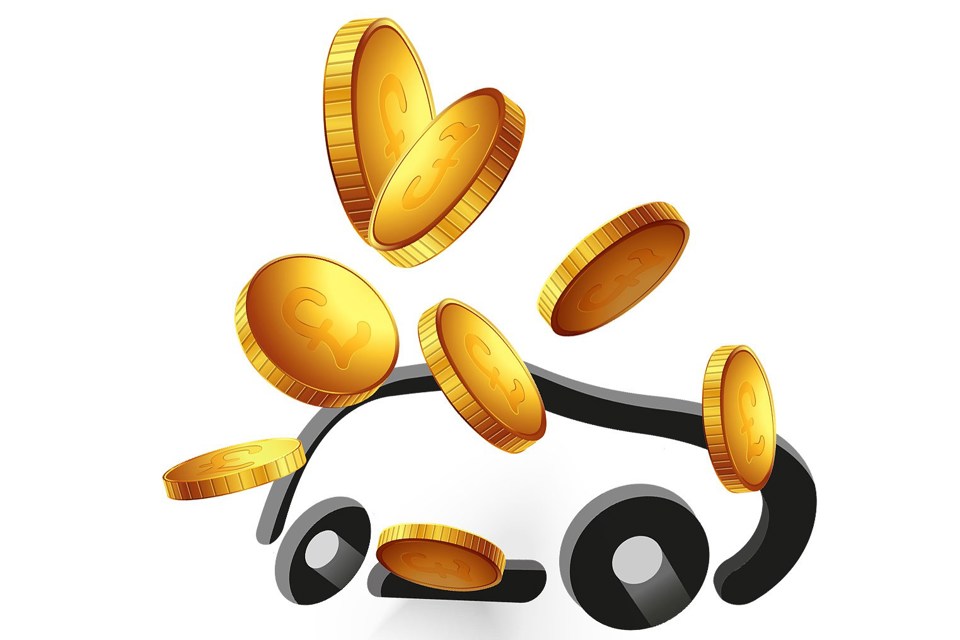1: Selling additional products
Selling additional products – paint protection, GAP insurance, etc. – to a customer is an important way to improve profit per new car sale.
Making add-ons part of the natural sales process is the most effective approach, but salespeople need confidence to do this, said Marcus Joy, managing director of Humphries & Parks Mitsubishi: “The natural inclination is that once you’ve sold the car, not to push too hard and to cut and run.”
Alan Graham, head of sales for Supagard, thinks salespeople gaining a thorough understanding of products such as paint protection helps profitability.
“Our nationwide team offers coaching to sales staff around the product, the process, the handling of objections, as well as understanding the efficacy of the product,” he said.
“It’s now very much an established part of the sale and we have evidence of repeat business for customers – and of the value that they see from having it. We’re finding that there
is an average 50-60% uptake from dealers that use our products.”
When dealers get the message across to customers, paint protection can be a profitable add-on, said Graham: “It’s very much an integral part of the sales process from the dealerships’ perspective and plays an important part, in a financial sense, because it’s such a big seller now. Most of our dealers tell us that we are a specific area of focus for sales targets. It’s a key part of a profitable sales department.”
2: Strike the right balance on manufacturer bonuses
Choosing the right time to push to trigger manufacturer bonuses is sometimes a tough call, but Joy finds that constant monitoring of performance is the best way forward.
“We set out at the start of the quarter and consider 100% is the minimum and we look at the numbers we need to achieve during every month, measured by the average business of the month. You just adjust your target to those natural peaks and flows,” he said.
“But the most important thing is to look at the run rate – how many we’ve sold in the last week, how many we’re expecting to sell in the next week – and then try and adjust our efforts to reach target, or over target, on the basis of that. It’s the speed at which you’re selling at any one time that matters, not the absolute number.”
However, chasing bonuses is not always in a dealership’s interests, suggested Keith Kingham from Kinghams of Croydon: “There’s a massive tension between short-term bonus attainment and long-term customer retention. I definitely won’t go for the short-term gain if I think it’s going to upset the long-term relationship. We have customers who have been with us for 30, 40 years and they buy a car with us every two or three years. That’s hundreds of thousands of pounds, so why would I wreck that for one sale that might make a little extra money?”
3: Analyse past purchases to identify add-on opportunities
Adding options that personalise a customer’s car is another area where additional profits can be made.
The key is to find out what features they find useful – and the starting point is often their old car, said Kingham: “When people come in to part-exchange their car, part of the conversation is about discovering what they’ve liked about it, what they found useful.”
Finding trends in existing data also allows salespeople to find an open door to push, said Joy: “We have the data on previous trends, but as a solus dealership it can be difficult in this fast-changing market to keep on top of it. I’d very much like to find the means to analyse the data, so we can predict seasonality.
“We do it in car sales, so we can change our stocking, but there are many more levels of sophistication that we can go to.”
4: Make sure the part-exchange valuation process is efficient and accurate
Getting the part-exchange right is also key to any profitable transaction, but dealerships today have technology at their disposal to help them maximise trade-in margins.
Guy Thomas, group head of product at BCA, said: “Advances in technology continue to accelerate the sales and remarketing process, which means the accurate appraisal of a vehicle has never been more important.
“An accurate and transparent appraisal process will help to close a sale. And from a tablet on the forecourt, a host of options now opens up to the dealer. All the options spring from an accurate appraisal and drive profitability throughout the process.
“With fewer customers stepping through dealership doors these days, it’s important for dealers to be able to offer a quick and efficient valuation process on a part-exchange vehicle.”
Joy said his experience supported this: “If we don’t want the car on part-exchange, we now sell everything on Dealer Auction, which has been averaging about 101-102% on CAP of the cars we’re selling, so we’re pretty confident that we price to mechanical and physical condition. Obviously, we’ll retail through our own resources as many as we can, but when you look at the ones you buy in from auction of other trade sources, they’re never quite as profitable as part-exchange.”
5: Use dealer-fit options to coax extra cash out of customers
Dealer-fit options – on display on showroom cars and demonstrators – are another way to coax extra cash out of the customer, perhaps using the marginal extra monthly cost as a way of highlighting how relatively inexpensive it is to have a better-specced car.
Kingham’s approach is spending time with customers to find out what they want and making the accessories attractive.
“We spend a lot of time of people, give them the accessories brochure, explain how we can give them a trade discount, we fit the items for free – and that makes people feel good about it,” he said.
Joy added: “Customers can choose from one of the four trims and then we can add dealer-fit accessories as well. Those don’t tend to be high-value items – it’s usually roof racks, towbars, cycle racks, protection packs, spare wheels and that sort of thing.
“With our cars we will sell something 60% of the time, but with the L200 over 90% will buy something. We’re averaging about £700 a unit. Most customers will then wrap those extras into the monthly payment.”
6: Choose the right staff and give them the right training
The ability to improve profit on every car sold often comes down to the ability of the salesperson – which is where training comes into the equation.
Darren Bedford, sales director of Symco Training, explained how additional, non-product-based training can prove vital.
“The specialist training that will get the most out of people concentrates on the soft selling skills, customer handling skills, how to bring some of the complex products of today to life and show what it can do for the customer.
“All too often, the sales pitch is particular to the salesperson – he or she knows what’s good about the car and they can’t wait to tell every customer. But in actual fact, the customer is buying the car on what they want out of it, so the role of the salesperson is to get into the customer’s mind and find what they use it for.”
Finding the right incentives and motivation is also key to having successful sales staff.
“Money is a very short-term motivator. Attitude is completely different. If you’ve got the right attitude and you’re able to motivate yourself, that stands the test of time. Most of the other things that we can do to motivate people are short-term fixes, rather than having any staying power.”
CRAIG THOMAS



















Login to comment
Comments
No comments have been made yet.